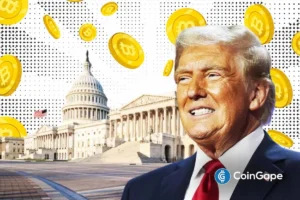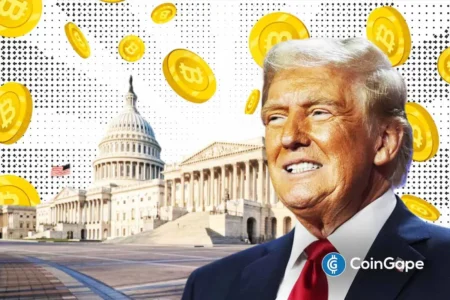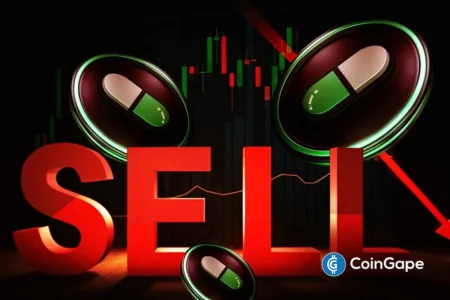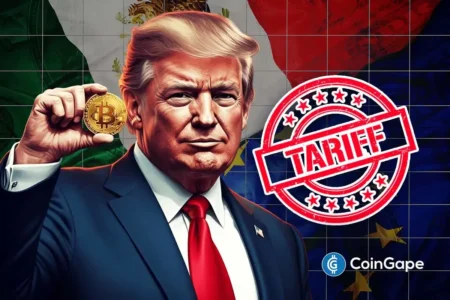Peter Schiff Questions Bitcoin’s Supply Cap: A Deep Dive into the Debate
Renowned Bitcoin skeptic Peter Schiff has ignited a lively discussion on X (formerly Twitter) regarding the cryptocurrency’s fixed supply cap of 21 million BTC. Following Bitcoin’s new all-time high of $118,000, Schiff boldly asserted that the notion of scarcity associated with Bitcoin is largely an illusion shaped by public perception. His comments have resonated across the platform, sparking intense debate among both supporters and detractors. In this article, we will explore Schiff’s criticisms, the public’s response, and the implications for Bitcoin and the broader cryptocurrency market.
Schiff’s Argument: Scarcity and Supply Perception
In a tweet that quickly garnered over 146,000 views, Schiff proposed that if Bitcoin’s total supply were increased to 21 billion, the cryptocurrency might still retain its perceived value. He emphasized that the supply of BTC itself is less significant than the supply of satoshis, Bitcoin’s smallest unit. Schiff argued, “21 million creates an illusion of scarcity that would be lost if the number was 21 billion.” This assertion has raised eyebrows and ignited conversations about what drives Bitcoin’s value: is it actual scarcity or merely the societal belief in its limited supply?
Many enthusiasts in the crypto community have dismissed Schiff’s arguments, highlighting that the number of satoshis essentially remains unchanged regardless of how many larger units exist. In essence, if Bitcoin were divided into more smaller units, fundamental value would be unaffected. Yet, Schiff’s perspective has prompted individuals to reconsider the psychological elements influencing consumer trust in Bitcoin, prompting a broader dialogue about market dynamics.
Public Reaction: A Divided Community
The response to Schiff’s comments has been polarized. Many users on X quickly countered his assertions with mathematical analogies and real-world comparisons. One user likened the argument to dividing a pizza into different numbers of slices, stating that this does not change the total amount of pizza available. Such creative metaphors have helped to clarify the fundamental misunderstandings Schiff’s remarks might evoke, with supporters arguing that Bitcoin’s established limit is what contributes to its desirability and perceived value.
Critics of Schiff point out that his statements may be part of a strategy to increase his online engagement, particularly since he identifies as an anti-Bitcoin commentator. Some even suggest that his newfound prominence in discussions surrounding cryptocurrency is a method of “engagement farming,” capitalizing on curiosity and controversy. Regardless of his motives, the debate surrounding Bitcoin’s supply remains energized, highlighting the contentious opinions that characterize the cryptocurrency ecosystem.
Schiff vs. Traditional Assets: A Preference for Gold
Peter Schiff has long been an advocate for traditional assets such as gold and silver, often criticizing Bitcoin’s viability as a long-term store of value. He maintains that real-world applications give precious metals an intrinsic worth that Bitcoin lacks, stating that gold’s status as a valuable commodity continues to make it superior. During the current market fluctuations, he declared, “Gold has taken a temporary pause. Meanwhile, silver is beating Bitcoin. I own silver too.” Such assertions reinforce his longstanding narrative that, while Bitcoin may be gaining traction, it still pales in comparison to more established forms of wealth.
Schiff’s skepticism towards Bitcoin does not stop at comparing it to precious metals. He has also raised alarms about the increasing corporate adoption of Bitcoin and its potential risks. He describes firms investing in Bitcoin as “fools looking to take advantage of other fools,” arguing that many of these businesses lack sound models or strategies for sustainable investment.
The Rise of Corporate and Institutional Investment
Despite pulling many skeptics, corporate investment in Bitcoin has been on an upward trajectory. Over 100 public companies now hold Bitcoin as a part of their balance sheets, with the total amount held exceeding 852,000 BTC. Major investment firms, including BlackRock and Michael Saylor’s company, have acquired over 1.3 million Bitcoins—representing about 6% of the total supply. This increasing institutional interest stands in stark contrast to Schiff’s opinions, indicating a growing acceptance of Bitcoin as a legitimate asset class for businesses and investors.
Nonetheless, Schiff’s critique remains grounded in his belief that the speculative nature of Bitcoin creates an unsustainable market environment. He argues that both corporate and retail investors may be engaging in risky behavior. Many users have also pointed out instances where Schiff has altered his views on Bitcoin, raising questions about his consistency and the underlying motivations for his critiques.
An Increasingly Polarized Cryptocurrency Landscape
The ongoing debates within the cryptocurrency community, especially those surrounding Bitcoin, serve to highlight the increasingly polarized opinions surrounding digital assets. While figures like Peter Schiff continue to critique Bitcoin’s framework and perceived value, many counterarguments emphasize the potential for cryptocurrencies to redefine wealth. This dissonance underscores the complexities of investor sentiment, market psychology, and the broader implications for economic systems.
Ultimately, as discussions about Bitcoin’s supply and inherent value continue, they represent more than just disagreements; they encapsulate the evolving narrative of digital currencies in a rapidly changing financial environment. With more investors taking an interest in crypto assets, exploring the psychological and perceptual dimensions of value remains crucial for understanding the future trajectory of this sector.
In conclusion, Peter Schiff’s provocative views on Bitcoin’s supply cap have catalyzed a renewed interest in discussions about the cryptocurrency market, its scarcity, and its perceived value. The community’s varied responses demonstrate that Bitcoin elicits strong emotions—both for and against—which can shape future investments and policies. As we continue to navigate through this pipeline of opinions and dialogues, one thing remains evident: Bitcoin’s journey is still far from over.















